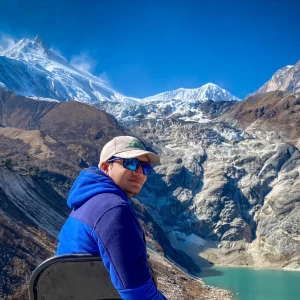Many travellers visit Nepal for Everest and Annapurna. But Mustang in Nepal offers a different kind of Himalayan adventure. It is dry, remote, and deeply spiritual.
Mustang is known as the “Himalayan desert” because it lies in the rain shadow of the Annapurna range. This area sees very little rainfall even during the monsoon. The landscape is filled with red cliffs, deep canyons, and dry valleys. It feels more like Tibet than Nepal. The region has preserved ancient caves, salt trade routes, and Buddhist culture.
Lo Manthang, the capital of Upper Mustang, was once a restricted Tibetan kingdom. It opened to foreigners only in 1992. Locals speak the Tibetan dialect and follow Tibetan Buddhism. Monasteries like Chhoser and Thubchen still hold daily rituals. Tiji Festival, celebrated in Lo Manthang, is a key cultural event each May. The entire area feels untouched by time and is a living museum of Tibetan heritage.
The way to get to Mustang Nepal (upper and lower) depends upon various factors such as budget, time available, choice of traveller, and physical fitness. You can travel from Kathmandu to Pokhara by flight, bus, or private vehicle, and then continue onwards to Mustang.
Understanding Mustang: Lower vs Upper
.webp)
Before knowing how to travel to Mustang, Nepal, you must understand the major situations of Mustang. The area is divided into 2 regions – Upper and Lower Mustang.
Lower Mustang – Best for shorter trips with no restrictions
Lower Mustang is easier to access and perfect for short cultural trips. It has a mix of Hindu and Buddhist traditions, showing rich local culture.
Lower Mustang includes popular places like Jomsom, Marpha, Kagbeni, and Muktinath. These villages offer various accommodation options. You can find basic lodges, mid-range hotels with en-suite bathrooms, and even luxury stays.
One standout is the Shinta Mani Mustang, a world-class luxury lodge in Jomsom. It offers wellness services and comfortable rooms. This lodge attracts travellers who want both adventure and relaxation.
Also check, Affordable Mustang Tour - 5 Days
Upper Mustang – Restricted area and Regulations
Upper Mustang is a restricted region north of the Kali Gandaki River. It shows strong Tibetan cultural influence. Travellers need special permits and must hire a licensed guide to enter this area.
Lo Manthang is the capital and an ancient walled city with palaces and narrow streets. Other key villages include Ghami, Chhusang, and Tangbe. Each village preserves unique Tibetan traditions and architecture.
Upper Mustang is famous for its ancient Buddhist monasteries. Chhoser Gompa is one of the oldest and most important monasteries. Thubchen Monastery near Lo Manthang has beautiful murals and statues. These sites remain active centres of worship.
The region’s dry valleys and red cliffs make Upper Mustang a unique Himalayan destination. It offers a rare chance to explore Tibetan culture and history in a remote setting.
Accommodation in Upper Mustang is basic but comfortable. Lodges offer essential amenities, including heating and private bathrooms in some places. Luxury options are limited, but the hospitality is warm and genuine.
Travel to Mustang via Air
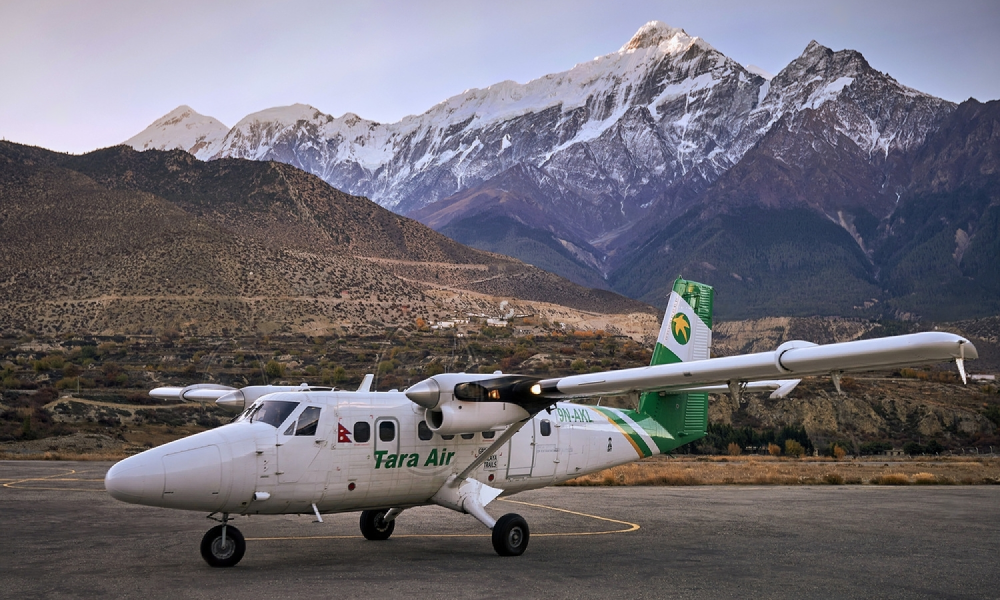
Many travellers ask if they can fly directly to Mustang. The answer is no, not from Kathmandu. You must first reach Pokhara and then take a short flight to Jomsom.
The flight from Pokhara to Jomsom takes about 15 minutes. It flies through the Kali Gandaki Gorge, one of the world's deepest. On clear days, you’ll see the Annapurna and Dhaulagiri Mountain ranges from your window. The landing at Jomsom Airport is short and scenic, but weather can cause delays.
Jomsom is the gateway to Mustang. From here, travellers hire jeeps to visit places like Muktinath, Marpha, and Lo Manthang. Marpha is known for apples and cider. Muktinath is a sacred site for Hindus and Buddhists. Lo Manthang, with its ancient walls, is the crown jewel of Upper Mustang.
Flights to Jomsom often get delayed, especially after mid-morning. This is due to strong valley winds. Helicopter tours to Upper Mustang are also available, but depend on weather. These winds affect both helicopters and small aircraft. It’s best to fly early and always have flexible plans. This makes planning important when deciding how to travel to Mustang, Nepal by air.
Also, check the Tours and Trekking in Nepal
Travel to Mustang via Road
.webp)
Many travellers prefer road trips to Mustang for flexibility and scenic beauty. You can travel by jeep or motorbike. Driving gives you more freedom to explore local villages along the way.
The road from Pokhara to Jomsom takes around 4 to 6 hours. Most of the route is now blacktopped and smooth. Since 2025, only about 15–20 kilometres (9–12 miles) remain off-road between Beni and Kagbeni. This section is dusty but not very difficult to drive.
Beyond Kagbeni, roads to Lo Manthang are wide but off-road. However, they are not very bumpy. This route is part of a trade highway that connects Nepal to Tibet. Jeeps are the common choice, especially for Upper Mustang. They are safer and more comfortable.
Motorbike tours are also popular for adventure travellers. These tours usually begin from Pokhara and follow the same trail. Riders must be skilled, as high winds and gravel sections require control. Guided bike tours are available and include support vehicles. If you're looking for a Mustang travel with flexibility, this is a great option.
Best Time to Travel to Mustang
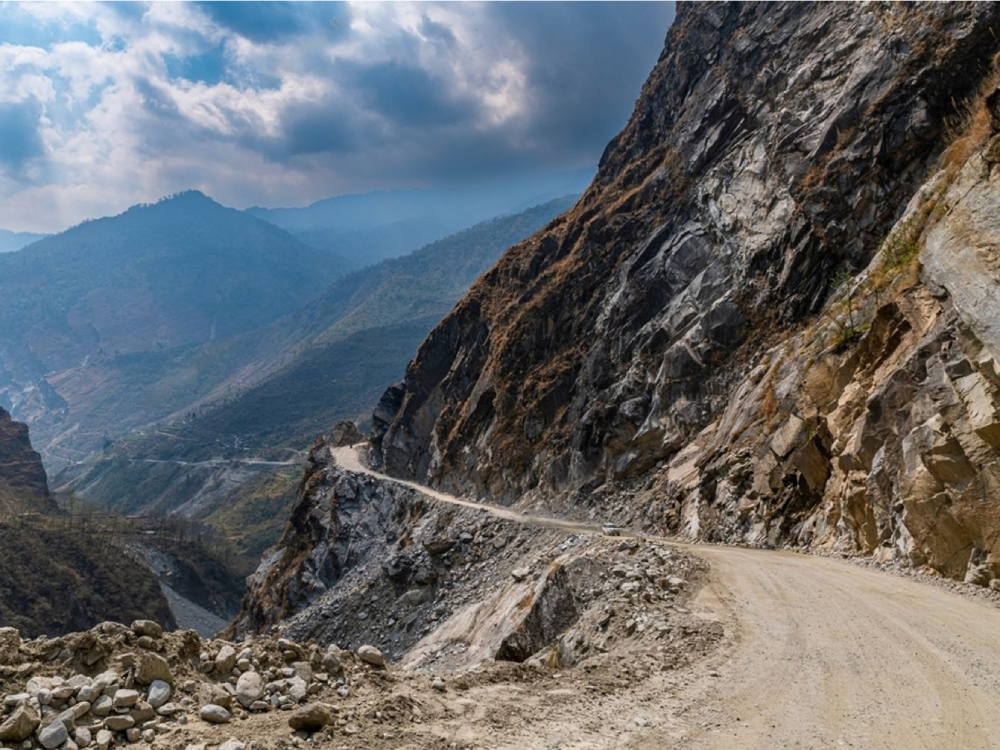
The best time to travel to Mustang depends on the weather and cultural events. Each season offers something different.
Spring (March to May) is great for trekking and jeep tours. Skies are clear, and flowers bloom. The Tiji Festival in Lo Manthang happens in May, attracting many travellers.
Summer (June to August) is monsoon across Nepal, but Mustang stays mostly dry. The region lies in a rain shadow. Travel is still possible, though roads near Beni may be slippery.
Autumn (September to November) is the most popular season. The weather is stable, the skies are clear, and the apple harvest in Marpha takes place.
Winter (December to February) is not recommended. Many villagers leave Upper Mustang due to freezing temperatures. Roads and services may be limited.
Yartung Festival in August at Muktinath celebrates the end of summer with horse races and local dances.
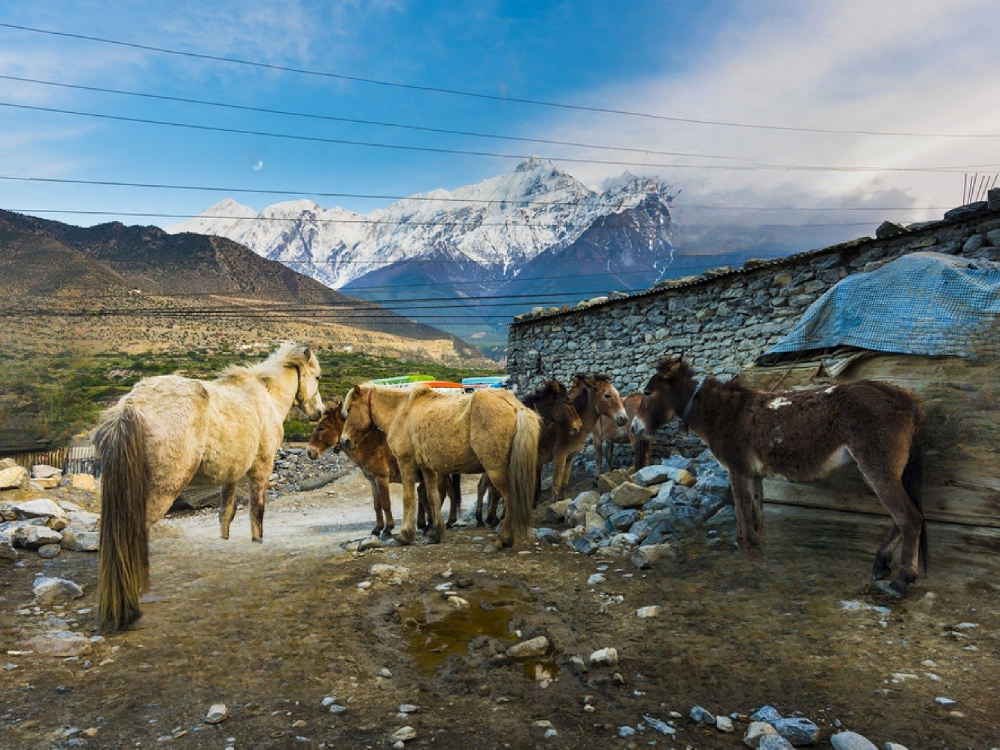
Permits and Guides Required to Travel to Mustang
For Mustang Tours, travellers need to arrange special permits. This is because Upper Mustang is a restricted area. These permits help protect the local culture and environment.
You need two main permits: the Upper Mustang Restricted Area Permit (RAP) and the Annapurna Conservation Area Permit (ACAP). RAP is required only for Upper Mustang. ACAP is needed for both Lower and Upper Mustang. These permits must be obtained through a registered trekking agency in Nepal.
The RAP costs USD 500 per person for the first 10 days. After that, it’s USD 50 per day. The ACAP costs USD 30 for foreign nationals. Indian and SAARC citizens pay less, around NPR 1000. The permits are not issued for solo travellers in restricted areas like Upper Mustang.
Government rules require at least two travellers in a group to get the RAP. You must also have a licensed trekking guide. Solo travellers cannot enter Upper Mustang alone, even if they are experienced. These rules apply to all restricted regions in Nepal for safety and regulation and are a major part of planning how to travel to Mustang, Nepal.
| Permits | Price of Permit | Additional Price |
|---|
| Upper Mustang Restricted Area Permit | $500 per person for the first 10 days | $50 per person per day to extend the 10 days |
| Annapurna Conservation Area Permit | $30 per person for other countries NPR 1000/- per person for Indian Travellers | None |
Sample Itineraries to Travel to Mustang, Nepal
These sample plans will help you choose the best way to experience the unique culture, stunning landscapes, and spiritual sites that Mustang has to offer. Whether you prefer trekking, jeep tours, or shorter trips, there is something for every traveller’s interest and fitness level.
Classic Upper Mustang Trek – 10 Days
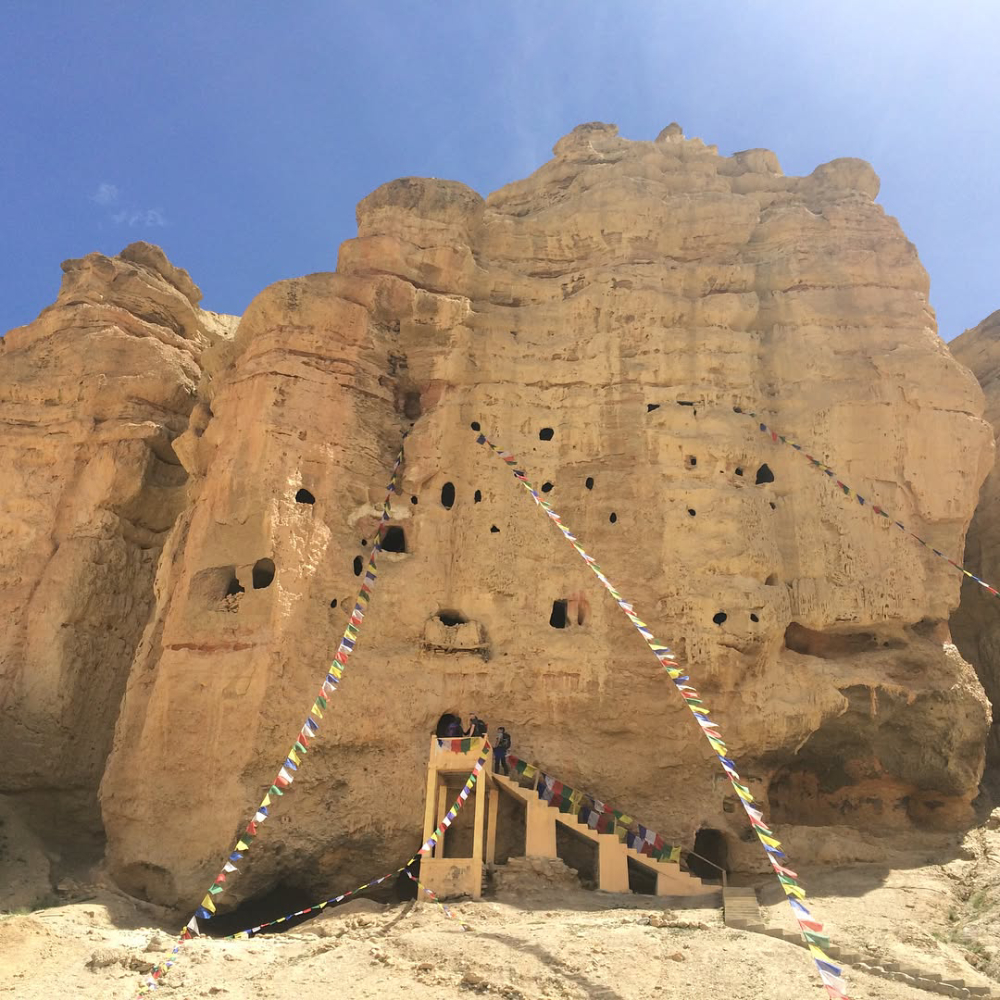
The classic Upper Mustang trek covers ancient villages like Kagbeni, Chele, Geling, Charang, and Lo Manthang. This route shows rich Tibetan culture and stunning red cliffs unique to the Himalayan desert. Trekkers will visit important monasteries and traditional villages rarely seen by outsiders.
The trek is moderate and fits anyone with basic fitness. Along the way, you explore the walled city of Lo Manthang, cross the high Lo Pass, and visit caves and monasteries in places like Namgyal and Ghami. Wildlife and rare plants add to the natural beauty of this journey.
The best time for this trek is during the Tiji Festival in Lo Manthang, held in May, or in autumn (September to November). These months offer clear skies, pleasant temperatures, and lively cultural events.
Itinerary:
Day 1: Arrive at Jomsom by flight or drive and trek to Kagbeni
Day 2: Trek Kagbeni to Chele (cross Kaligandaki River)
Day 3: Trek to Geling and Charang
Day 4: Trek to Lo Pass and arrive at Lo Manthang
Day 5: Trek to Namgyal Village and Milarepa Caves
Day 6: Trek to Ghar Gompa, Dakmar, and Ghami
Day 7: Trek Ghami to Chele
Day 8: Trek Chele to Kagbeni
Day 9: Trek Kagbeni to Jomsom
Day 10: Depart Jomsom by flight or drive
Upper Mustang Tour by Jeep – 7 Days

This Jeep tour is perfect for travellers who want to explore Upper Mustang without trekking. It offers comfort, speed, and access to remote locations. You’ll follow the trans-Himalayan highway that links Nepal to Tibet.
The route passes through ancient villages, dry valleys, and historic towns like Tsarang and Lo Manthang. You’ll visit Chhoser Sky Caves and cross open plateaus with views of Nilgiri and Dhaulagiri. Stops at Marpha and Muktinath add cultural depth.
Anyone with normal health can join this trip. No trekking experience is required. The best time to go is autumn (Sep–Nov) or during the Spring (March-May), when the weather is clear and the roads are dry.
Itinerary:
Day 1: Arrive in Jomsom by flight or drive, explore Marpha and Kagbeni
Day 2: Drive from Kagbeni to Ghami
Day 3: Drive from Ghami to Tsarang
Day 4: Drive from Tsarang to Lo Manthang
Day 5: Explore Lo Manthang and visit Chhoser Sky Caves
Day 6: Drive to Kagbeni via Muktinath
Day 7: Depart from Jomsom by flight or drive
Lower Mustang Tour- 4 Days
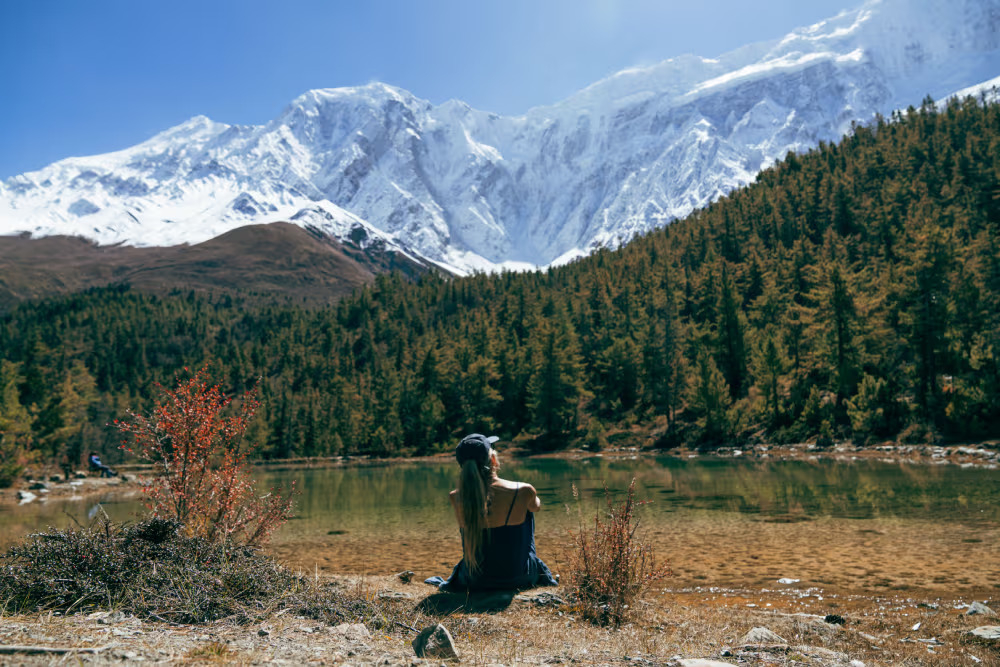
This short tour is perfect for cultural explorers and spiritual travellers. Lower Mustang offers deep heritage and stunning landscapes. The trip is possible year-round, depending on local flight timings.
The tour includes visits to ancient villages like Jharkot and Jhong, and the sacred Muktinath Temple. You’ll also see apple orchards in Marpha and the peaceful Dhumba Lake. It’s ideal for families, seniors, or anyone with limited time.
Itinerary:
Day 1: Arrive in Jomsom by flight or drive, explore Marpha and Kagbeni
Day 2: Drive to Muktinath, visit Jharkot and Jhong ancient villages
Day 3: Drive to Dhumba Lake, explore Lubra and Thini villages
Day 4: Depart Jomsom by flight or drive
Conclusion
For any enthusiastic traveller, how to travel to Mustang, Nepal, will not be a difficult answer to find. As a place of natural as well as a cultural hub, Mustang is one of the destinations you need to visit. In the Mustang travel journey, you will find the spiritual as well as physical clarity you seek. Whether you're wondering how to reach Mustang or what to expect when you get there, Mustang always offers something special.

.webp)

.webp)





